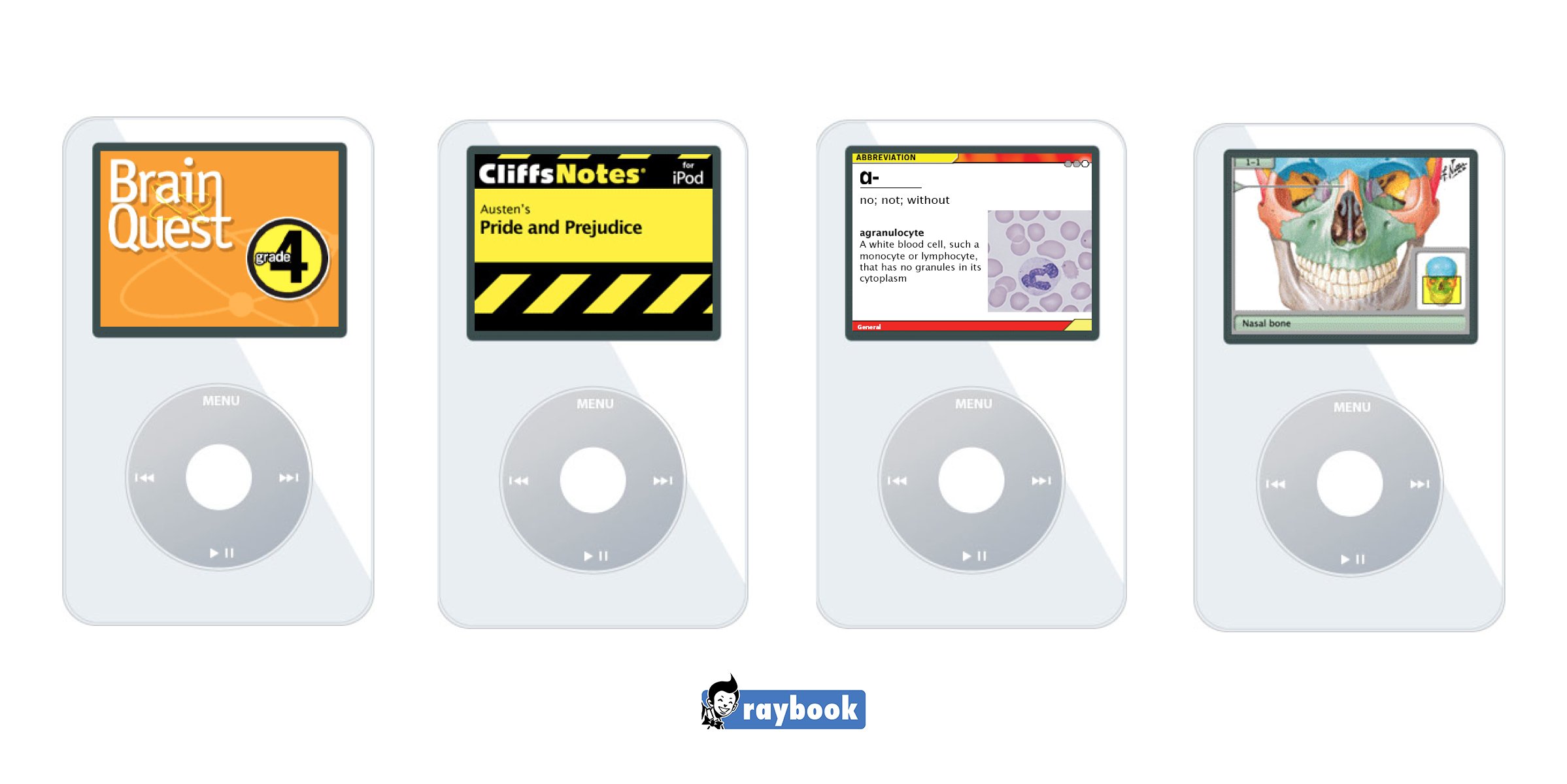Modality, Inc. | 2007 — 2010
Senior Designer
I was the first employee at Modality, Inc., where we created mobile tech for click-wheel iPods before transitioning to mobile apps after the iPhone was announced. Our apps were among the first to be featured in the App Store when it launched in 2008.
Through licensing deals with multiple publishers, we transformed their print content into novel, immersive experiences in over 150 apps, including: Netter’s Anatomy, Brain Quest for Kids, Frommer’s Travel Guides, the Princeton Review, and many more.
Modality, Inc. was acquired in 2010 by Epocrates.
My Core Responsibilities
Worked closely with the founders to expand the product offering from an initial click-wheel set of “apps” called Raybooks to a suite of over 150 iPhone applications.
Collaborated with the CEO to instill design practices and standards into all products.
Managed and improved the production process for data-driven graphics, a core piece of the content-creation process for Raybooks, and later, many iPhone apps.
Lead the design team, which included visual, interaction, and production designers.
Maintained third party brand standards across applications.
Following the release of the iPhone, internalized the iOS platform and Human Interface Guidelines and ensured these were met in our new app designs.
Worked closely with the engineering team to understand architecture concepts in order to inform design.
Ensured designs were implemented to specifications.
Tools for App Design and Print Work
Adobe Photoshop, Illustrator and Indesign
Tools for Animation
Adobe After Effects
Tools for iOS/Web & Data Transformation
HTML/CSS, JS, XSLT, Perl, Ruby
Creating Raybooks utilized a novel process that we matured over the few years before the iPhone was announced. The process of creating data-driven graphics for a wide variety of brands & content types including: travel guides, medical atlases, flash cards, and much more, was an interesting process that yielded some really exciting results.
We created a novel process of using data sets configured for use within Adobe Photoshop to generate of thousands of images for each Raybook title. Photoshop is also scriptable, which we took advantage of often, creating a workflow that allowed for a a semi-automated image generation and export process.
We created hundreds of Raybooks for various brands, including Cliffs Notes, Brain Quest for kids, and dozens of medical reference and education titles.
Some titles were sold in stores like Barnes & Noble, Apple, and more.
Apple released the iPhone in June 2007, with the developer SDKs and App Store following just over a year later in July 2008. During this year, our Head of Technology used a jailbreak SDK to get a headstart on learning iOS, and so we were able to redesign a small set of our most popular Raybook titles into iPhone apps ahead of the 2008 WWDC. I worked closely with the Modality CEO on UI details, learning about the iOS user experience and interface along the way.
The CEO and Head of Technology presented our flagship iPhone app Netter’s Anatomy alongside Steve Jobs at the 2008 WWDC keynote.
During my tenure, we grew the design team to include another visual designer and a handful of production designers, as a lot of our apps required a significant content transformation process to prepare the printed materials for use in an app.
Over the next 2 years, we released 150+ apps. While some were able to reuse common features for certain titles like atlases, flash cards, and training guides, others required a completely custom approach.
We were among a select few companies to receive an exclusive preview of the iPad before its public release in order to have an offering available upon the iPad’s public release. We developed Modality Body and its accompanying marketplace of Medical Education and Reference tools, shown by Steve Jobs in the 2010 WWDC keynote.
After Epocrates acquired Modality, many of the medical titles from Modality’s catalog were rebranded and distributed as Epocrates apps.




